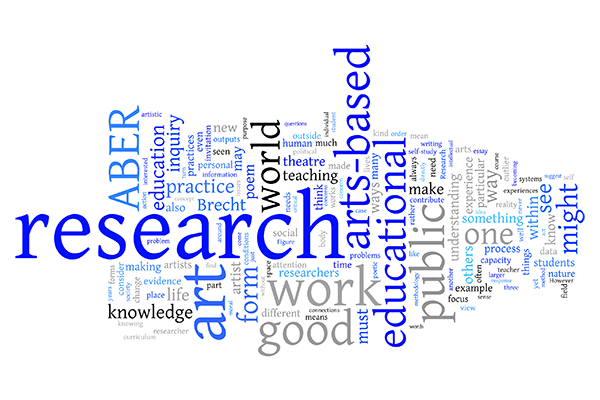International Journal of Education & the Arts | |
Volume 15 Special Issue 2 |
October 6, 2014 |
Special Issue: What Does It Mean To Have An N of 1? Art-making, Education Research And The Public GoodDonald Blumenfeld-Jones, Guest EditorArizona State University, USA
Monica Prendergast, Guest Editor
Citation: Blumenfeld-Jones, D. & Prendergast, M. (Eds.). (2014). Special issue: What does it mean to have an N of 1? Art-making, education research and the public good. International Journal of Education & the Arts, 15(SI 2). Retrieved [date] from http://www.ijea.org/v15si2/.Abstract This special issue examines/questions the present state of Arts-Based Educational Research [ABER] work in three dimensions. The first of these dimensions is a tendency within ABER practice for researchers to focus on their own lives as the central "data" of the work (thus, an N of 1). The second dimension deals with considering the public good as a driving force for education. Each author will conceptualize her/his vision of the "public good", art making and the interrelationship of these goals and practices within ABER. The third dimension raises the question of the place of education as a site of inquiry in ABER practice. We are asking: has ABER strayed from this interest and, if so, how and with what attendant consequences?
Visual Abstract
Editorial The first of these dimensions is a tendency within ABER practice for researchers to focus on their own lives as the central "data" of the work (thus, an N of 1 in the special issue title). While this focus may be treated by the researcher as moments of education the researcher does not necessarily or explicitly connect the experiences to issues of education, schools, curriculum, and so forth or contextualize the life rendered within larger socio-political-cultural-economic spheres. We are not pre-determining whether these two tendencies are necessarily a problem nor if explicitness about the connection to such issues is desirable. That will be left to each author for her/his response to these issues. The second dimension deals with considering the public good as a driving force for education. Each author addresses how ABER work connects with and/or directly addresses society's need/s and the public good as perceived by the researcher. As there are many construals of the "public good" and the relation to art-making and the arts to this "public good," each author will conceptualize her/his vision of the "public good" and its relationship to ABER. Additionally, we will consider how ABER practitioners might address this good and make it manifest in their work (or not make it manifest if a particular author does not see this as central to ABER). In short we ask, "Why should ABER exist in a public space?" To be very clear, in putting forth this issue, there is no particular political agenda suggested by the notion of "the public good". The special issue papers begin with the notion that all ABER practitioners, no matter, her/his political stance, can, if s/he so chooses, work through the arts as a research mode to address the public good. The fundamental question is: What is and/or should be the place of this focus in ABER practice? The third dimension, and in a parallel fashion to the public good question, raises the question of the place of education as a site of inquiry in ABER practice. In some cases of ABER work we find that the work does not focus on education in schools, or does not focus on teaching, learning, curriculum or other dimensions of schools as a central interest. Given the name of this practice (Arts-Based Educational Research) we wish to discuss the problematics and affordances of this issue and what it means for the future of ABER. We are asking: Has ABER strayed from this interest and, if so, how and with what attendant consequences? In sum, each author in this issue focuses on what s/he makes of these questions and the prompting dimensions. The papers also address the place of art-making in ABER practice and how it relates or does not relate to the above questions. --Donald Blumenfeld-Jones and Monica Prendergast, Co-editors
Special Issue Contents
|

